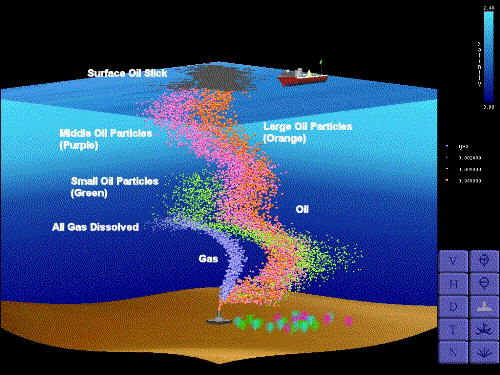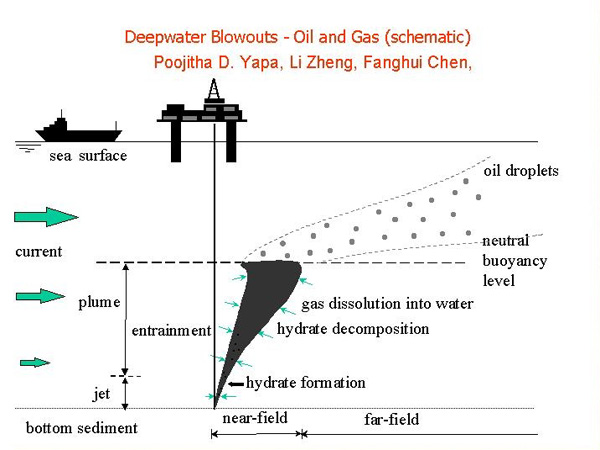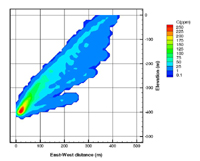
Poojitha D. Yapa
Professor of Civil and Environmental Engineering
Wallace H. Coulter School of Engineering
Clarkson University
CDOG Model
(Comprehensive Deepwater Oil and Gas Blowout Model)

CDOG simulates the behavior of oil and gas accidentally released from deep water. This is a three-dimensional model. In deepwater, the ultra-high pressure and cold temperature causes phase changes in gasses. These effects combined with deepwater currents in some regions presents extraordinary challenges to modeling jets/plumes from deepwater oil and gas blowouts. CDOG is being used by the US government agencies (MMS, NOAA) and oil companies.

CDOG model incorporated the phase changes of gas, associated changes in thermodynamics and its impact on the hydrodynamics of the jet/plume. Hydrate formation, hydrate decomposition, gas dissolution, non-ideal behavior of the gas, and the jet/plume hyrodynamics and thermodynamics.

CDOG can take 3-D currents, salinity, water temperature (hence water density) that varies both spatially and temporally. CDOG model has been used to numerically simulate the large scale and unique field experiments "Deepspill" conducted in Norway at a cost of US $2.5 million.

"Deepspill" experiments consisted of two oil and methane gas releases and one methane gas only release from a deepwater location (844 m water depth). The comparisons between the simulations and the observations are good. CDOG model has also been used to simulate various anticipated deepwater blowout scenarios. It can be used during an actual blowout to help make decisions.

Papers Published in Journal of Hydraulic Research (IAHR):
CDOG Paper part - 1CDOG Paper part - 2
Papers Published in Journal of Marine Systemes(ELSEVIER):
Paper on Hydrate Formation and DissociationPapers Published in Journal of Hydraulic Engineering (ASCE):
Paper on Buoyant Velocity of Oil and Gas
Experimenting, Developping Models and Sharing Knowledge on Deep Water Oil Related Problems for more than 20 Years

Clarkson University has a worldwide reputation for its leading oil and gas computational research More >>
Contact
- E-mail:
- pdy at clarkson dot edu
- Telephone:
- 315-268-7980
- Fax:
- 315-268-7985
- Address:
- Clarkson University
Box 5710,
130 Rowley Laboratories, Potsdam,
NY 13699-5710 U.S.A.